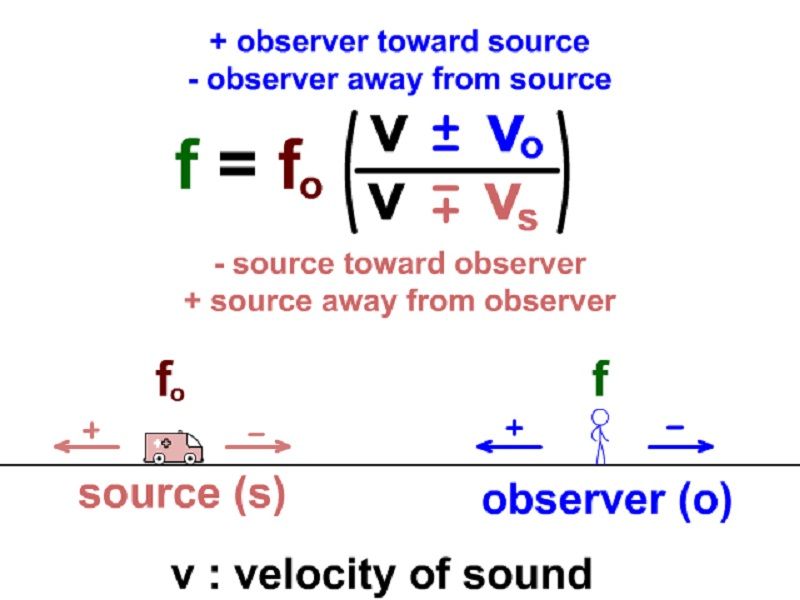
Motion toward the source increases frequency as the observer on the right passes through more wave crests than she would if stationary. (c) The same effect is produced when the observers move relative to the source. The opposite is true for the observer on the left, where the wavelength is increased and the frequency is reduced. The wavelength is reduced, and consequently, the frequency is increased in the direction of motion, so that the observer on the right hears a higher-pitched sound. (b) Sounds emitted by a source moving to the right spread out from the points at which they were emitted. (a) When the source, observers, and air are stationary, the wavelength and frequency are the same in all directions and to all observers. The observer moving toward the source receives them at a higher frequency, and the person moving away from the source receives them at a lower frequency.įigure 17.30 Sounds emitted by a source spread out in spherical waves. Finally, if the observers move, as in case (c), the frequency at which they receive the compressions changes. Thus, the wavelength is shorter in the direction the source is moving (on the right in case b), and longer in the opposite direction (on the left in case b). This moving emission point causes the air compressions to be closer together on one side and farther apart on the other. Each compression of the air moves out in a sphere from the point at which it was emitted, but the point of emission moves. If the source is moving, the situation is different. If the source is stationary, then all of the spheres representing the air compressions in the sound wave are centered on the same point, and the stationary observers on either side hear the same wavelength and frequency as emitted by the source (case a). Each disturbance spreads out spherically from the point at which the sound is emitted. What causes the Doppler shift? (Figure) illustrates sound waves emitted by stationary and moving sources in a stationary air mass. Their music was observed both on and off the train, and changes in frequency were measured. Doppler, for example, had musicians play on a moving open train car and also play standing next to the train tracks as a train passed by. The Doppler effect and Doppler shift are named for the Austrian physicist and mathematician Christian Johann Doppler (1803–1853), who did experiments with both moving sources and moving observers. The actual change in frequency due to relative motion of source and observer is called a Doppler shift. For example, if you ride a train past a stationary warning horn, you will hear the horn’s frequency shift from high to low as you pass by. Although less familiar, this effect is easily noticed for a stationary source and moving observer.

The Doppler effect is an alteration in the observed frequency of a sound due to motion of either the source or the observer. We also hear this characteristic shift in frequency for passing cars, airplanes, and trains. Also, the faster the ambulance moves, the greater the shift. The closer the ambulance brushes by, the more abrupt the shift. As the ambulance passes, the frequency of the sound heard by a stationary observer changes from a constant high frequency to a constant lower frequency, even though the siren is producing a constant source frequency.

But in addition, the high-pitched siren shifts dramatically to a lower-pitched sound. First, the sound increases in loudness as the ambulance approaches and decreases in loudness as it moves away, which is expected. Specifically, if you are standing on a street corner and observe an ambulance with a siren sounding passing at a constant speed, you notice two characteristic changes in the sound of the siren. The characteristic sound of a motorcycle buzzing by is an example of the Doppler effect. Explain the change in observed frequency as an observer moves toward or away from a stationary source of sound.

Explain the change in observed frequency as a moving source of sound approaches or departs from a stationary observer.Each compression of the air moves out in a sphere from the point where it was emitted, but the point of emission moves.By the end of this section, you will be able to:


 0 kommentar(er)
0 kommentar(er)
